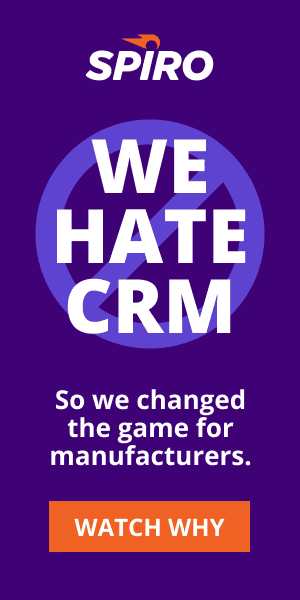7 Tips to Get a Prospect to Respond to You
How do salespeople spend most of their day? If you organized it by order of time spent, starting with most and descending to least, a good estimate would probably be prospecting, following-up, making sales presentations, and dealing with closed deals and administrative tasks. As you might have noticed, the first two tasks take up a significant portion of the average salesperson’s time. To put it simply, getting in touch with people and getting them to respond to you is probably what salespeople spend most of their time doing.
Given that fact, it makes sense to focus on how that time can be spent more effectively. If you’re constantly reaching out and trying to get people to respond to you, it’s important to optimize how you do it in order to make the best use of your time. So we decided to come up with some tips for how to get a prospect to respond do you. Here are the seven best ones:
1. Use their preferred method of communication
These days everybody has a preferred method of communication, whether it’s text messaging, email, or even LinkedIn messaging. This is why it’s absolutely critical that you use the method of communication that the prospect wants to use. You can’t keep trying to stick a square peg into a round hole and some people just don’t want to talk on the phone. It’s as simple as that. If you want to get a prospect to respond and communicate, then go to where they’re comfortable communicating and responding.
2. Switch up your contact attempts
We tend to get into habits where we do the same things every day. And prospecting isn’t exempt from our repetitions. If you usually set aside a certain part of the day to prospect, then chances are you’re reaching out to a prospect at the same time every day. Make an active effort to switch up the time and day when you try to contact somebody. Try reaching out in the morning after you’ve picked up your cup of coffee, or late afternoon on your ride home. Chances are that you’ll have more luck just by trying something different.
3. Offer them something of value
In today’s economy, prospects not only appreciate receiving something of value from companies and salespeople, they expect it. That’s why you should always have something available to offer your prospect when you’re reaching out. This can, of course, be in the form of information, and it most often is. The more customized to the particular prospect, the more effective it will be. But things like guides, infographics, books, and white papers are often very useful if you don’t want to reach out to somebody empty-handed.
4. Let them know when you’ll be following up again
When you call a prospect or email, you should let them know exactly when you’ll be following up with them again, and then make sure you follow up at exactly that time or day. This will show that you’re a planner, and reliable, and also add a level of transparency to your outreach efforts that some prospects will appreciate. However, this can also be a double-edged sword if somebody is intent on ignoring you, but if that’s the case, then they’re not going to be a buyer anyway.
5. Make a personal connection
Prospects want to work with people who make them comfortable, and it’s no secret that a personalized communication usually does better than one that isn’t. Your best bet, of course, is to get an introduction to a prospect from somebody you know. If that’s not possible, then you can focus on doing a healthy amount of research (without being creepy) on the prospect before reaching out. This will show that you took the time to look the person up, and allow you to send a message that will resonate with them, increasing the likelihood of a response.
6. Use humor
Not everyone can pull it off effectively, but using humor can be a great way to get a prospect to become more willing to respond. Whether it’s making your outreach emails have a funny and playful twist, or injecting comedy into your calls, if done effectively you’ll be able to differentiate yourself from the dozens or hundreds of other salespeople who are likely attempting to get in touch with the prospect. One thing to note here; humor in this context needs to either be harmless or self-deprecating. You should never, ever make fun of the prospect.
7. Take risks
When all else fails, you have nothing to lose. It’s time to take some risks. This can mean a whole number of different things, from making an unannounced visit where you know the (important) prospect is going to be, to sending a hand-written note with a gift, to trying something really dramatic in an email or over the phone. But the worst thing you can do is not to make every effort possible to get your prospect’s attention, especially if you know they’re a perfect prospect for your business. Just make sure you always stay respectful and on the right side of the law.
For more help getting prospects to respond, learn about Spiro’s proactive relationship management platform.

